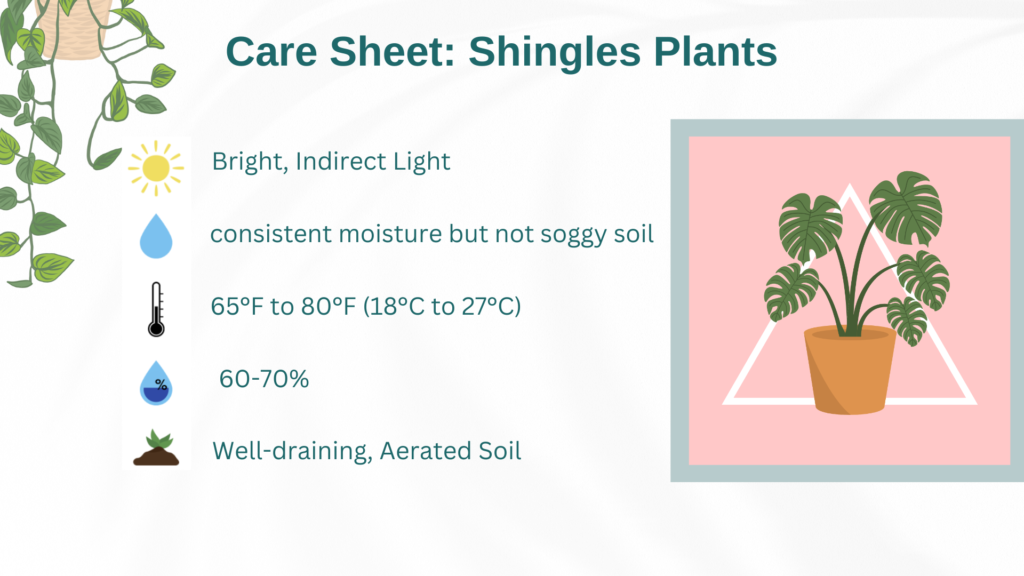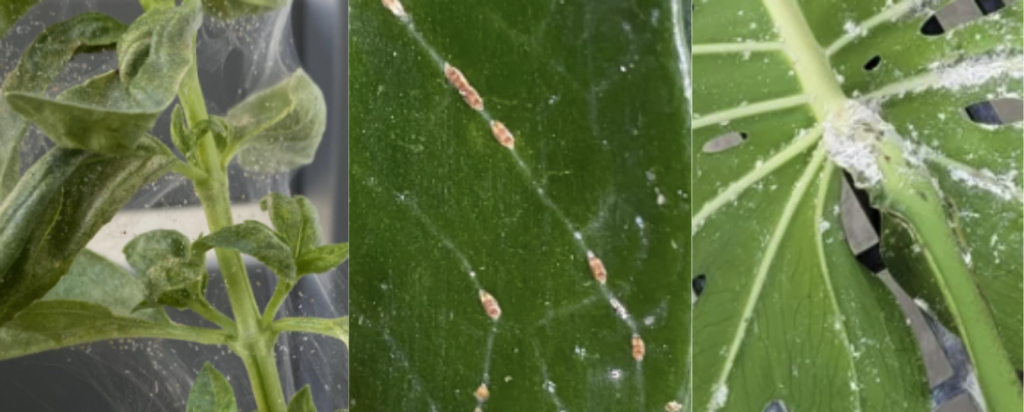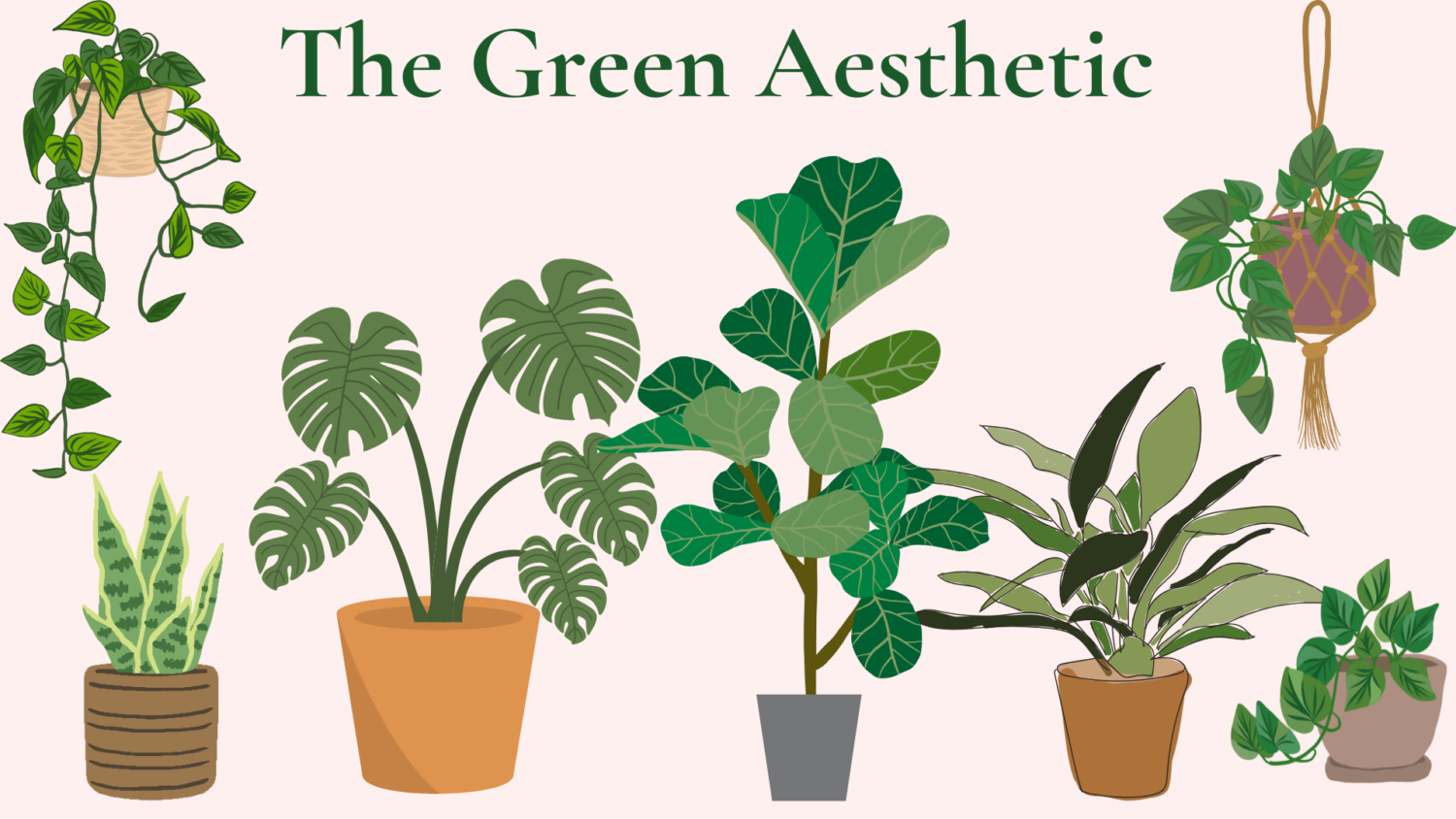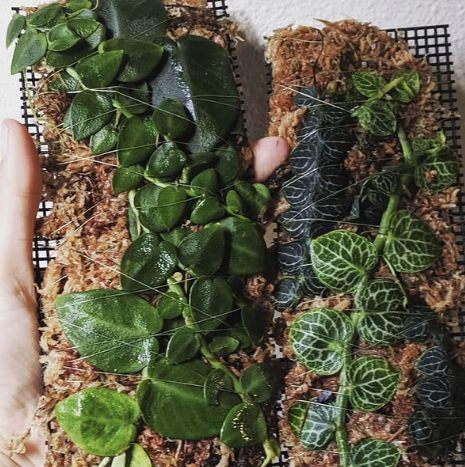The Shingles Plant, commonly referring to the Rhaphidophora hayi and Rhaphidophora cryptantha, is a fascinating tropical climbing plant.
Its shingling growth pattern mimics green roofing shingles, with flat, overlapping leaves clinging tightly to surfaces like a moss pole, wooden board, or moss board.
These plants are excellent for bringing a unique and lush look to your collection of indoor plants.
How to Identify a Shingles Plant
The Rhaphidophora hayi has elongated, dark green leaves with subtle veining
While the Rhaphidophora cryptantha displays heart-shaped leaves adorned with striking silver patterns.
Both species require a vertical climbing surface, and their tight, flat leaf growth distinguishes them from other types of plants like the Monstera dubia.
These slow-growing plants often develop small aerial roots, which help them attach to supports.
Size
Shingles Plants are compact but impactful. When grown indoors, they typically reach a height of 2-3 feet, provided they have a sturdy climbing surface.
Their narrow, vertical growth pattern makes them ideal for tight spaces, where they can create the illusion of a lush green roof shingle effect without taking up much horizontal room.
Care

Light Requirements
Position your Shingles Plant in bright indirect light to mimic its native habitat. A west-facing window with a sheer curtain or a north- or east-facing window are good examples of optimal placements.
Avoid much light that is direct, as it can scorch the leaves, and too little light, which results in slow growth and dull foliage.
Watering Needs
Water your Shingles Plant when the top inch of soil feels dry.
During the growing season (spring and summer), ensure the soil stays consistently moist but never soggy, allowing excess water to drain properly.
In the winter months, reduce watering slightly. Always use room-temperature water or filtered water to prevent mineral buildup, which could harm the plant.
Temperature
These tropical plants thrive in temperatures between 65°F and 80°F.
They are highly sensitive to extreme heat, cold drafts, and sudden temperature changes. Maintaining consistent warmth is critical to encourage new growth and prevent the plant from struggling.
Humidity
High humidity is crucial for Shingles Plants, with an ideal range of 60-70%.
Use a humidifier, place the plant on a pebble tray, or even cover it temporarily with a loosely fitted plastic bag to maintain moisture levels. Avoid letting the plant dry out, as low humidity can cause browning edges on the leaves.
Soil Requirements
For optimal health, use a well-draining soil type that is rich in organic matter. A mix of orchid bark, perlite, and peat moss is excellent for retaining moist soil while ensuring excess water flows out to prevent root rot.
Good drainage is essential, so always check that your soil allows the plant to breathe.
Fertilizer
Feed your Shingles Plant every 4-6 weeks during the growing season with a well-balanced liquid fertilizer, diluted to half strength.
Over-fertilizing can damage the plant, so it’s better to err on the side of caution. This will support vibrant new leaves and healthy overall growth.
Potting
Select a pot with drainage holes to prevent waterlogging. Repot every 2-3 years or when the plant has outgrown its support.
Choose a larger pot only if the roots are bound, and perform repotting in early spring to give the plant ample time to adjust during its active growth phase.
Pruning
Minimal pruning is required for Shingles Plants. Remove any damaged or yellow leaves promptly to maintain a clean appearance and to redirect energy to new growth.
Occasional trimming can also encourage a more compact, manageable plant structure.
Propagation
The best way to propagate your Shingles Plant is through stem cuttings:
- Cut a segment with at least two aerial roots and a node (a small bump where roots can grow).
- Place the cutting in water or plant it directly in moist soil, ensuring the node is buried.
- Keep the cutting in a warm, humid environment with indirect sunlight. Using a clear container for water propagation allows you to monitor new root development.
Pests
Shingles Plants can occasionally attract pests, and proactive care can help mitigate infestations. Here are some common pests to watch out for:
- Spider mites: These tiny pests cause leaves to develop a speckled appearance and can leave fine webbing on the plant. Treat infestations by wiping the leaves with a damp cloth and spraying the plant with insecticidal soap.
- Mealybugs: Recognizable by their white, cotton-like appearance, mealybugs cluster on leaves and stems. Remove them with a cotton swab dipped in rubbing alcohol or spray the plant with a neem oil solution.
- Scale insects: These pests look like small, brown bumps attached to the plant. Gently scrape them off with a soft tool, such as a toothbrush, or treat with insecticidal soap.
- Thrips: Tiny, black, or yellowish insects that feed on plant sap, causing discolored and damaged leaves. Use sticky traps to catch thrips and treat with horticultural oil.
Pro Tip: Regularly wiping down the leaves with a damp cloth can help prevent pests and keep your plant looking fresh.

Diseases
The most common diseases affecting Shingles Plants include:
- Root rot: Caused by overwatering or poor drainage. Trim mushy roots and repot the plant in fresh soil if this occurs.
- Fungal infections: Symptoms like leaf spots may indicate poor air circulation or excess humidity. Address these issues promptly.
Is It Toxic?

Yes, Shingles Plants are toxic to pets and humans if ingested, so keep them out of reach of curious pets and children.
Common Issues
Here are some common problems with Shingles Plants and how to fix them:
- Yellow leaves: Often caused by overwatering or a lack of nutrients. Adjust your care routine as needed.
- Browning edges: Usually due to low humidity. Increase moisture in the environment.
- Drooping leaves: Typically a sign of underwatering. Check the soil and water as needed.
- Sad-looking houseplant: Evaluate environmental factors like light, humidity, and watering to identify the most likely cause of problems.
Difficulty Level
Shingles Plants are moderately challenging to care for.
Their requirements for high humidity and precise watering demand some attention, but with consistent care routines, they can thrive and bring an extraordinary aesthetic to your indoor space.
Choosing the Right Species
- Rhaphidophora hayi: Known for its elongated, dark green leaves, this species is slightly easier to find and care for.
- Rhaphidophora cryptantha: This one has smaller, heart-shaped leaves with a beautiful silver veining. It’s a bit harder to find but very rewarding for plant enthusiasts.
Both types have similar care needs, so it really depends on your personal preference.
Final Thoughts
The Shingles Plant Rhaphidophora species is a rare and eye-catching addition to any plant lover’s collection.
Native to New Guinea, these tropical climbing plants excel in creating a bold, vertical statement. By carefully managing environmental factors such as humidity, light, and soil moisture, you can enjoy this unique and rewarding plant for years to come.
Frequently Asked Questions
- Can the Shingles Plant be propagated in water?
- Yes, you can propagate the Shingles Plant in water. Use a cutting with at least one node and place it in a clear container filled with water. Once the roots grow to about 1-2 inches, transfer the cutting to soil.
- Why is my Shingles Plant yellow?
- Yellow leaves are usually caused by overwatering or poor drainage, which can lead to root rot. Check the soil and adjust your watering schedule to prevent soggy conditions.
- Why is my Shingles Plant not growing?
- Slow or stunted growth can result from insufficient light, low humidity, or nutrient deficiencies. Ensure your plant receives bright indirect light, proper humidity levels, and occasional feeding during the growing season.
- Can my Shingles Plant grow back?
- Yes, with proper care, the Shingles Plant can recover from stress or pruning. Focus on providing a consistent environment with adequate light, humidity, and watering.
- Can I use artificial light with my Shingles Plant?
- Yes, artificial grow lights can be a great supplement, especially in areas with limited natural light. Use a full-spectrum LED light to mimic the plant’s native environment.
- Where is the best place to keep my Shingles Plant?
- The best spot is near a bright, indirect sunlight source, like a north- or east-facing window, or a west-facing window with filtered light. Avoid areas with drafts or extreme temperatures.
- Is the Shingles Plant safe for animals?
- No, Shingles Plants are toxic to pets. Keep them out of reach of animals to prevent accidental ingestion.

